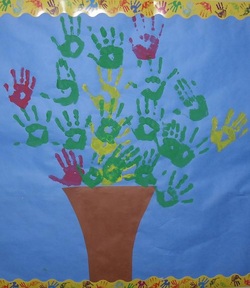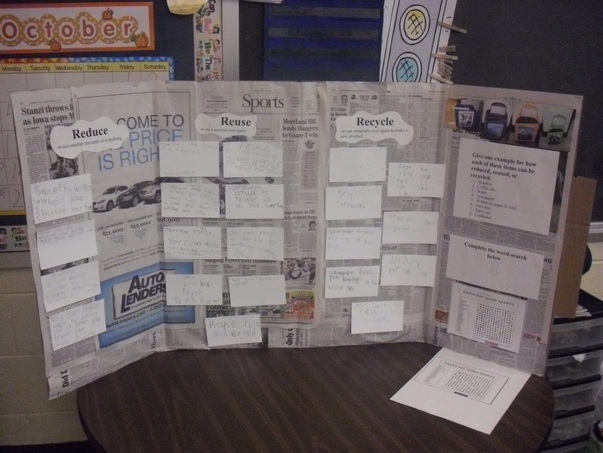I am a student at Rowan University with a dual major in Elementary Education and Writing Arts. Along with these degrees, I’m also completing my Special Education certification. I’ve had many opportunities to work with children amongst different grade levels. Some of these experiences include: currently a teacher’s aide at a private special education school, previously employed at a childcare facility, and having spent designated hours at different locations for field experiences. I’ve also had the opportunity to grow up with a sibling that has severe ADHD. All of these experiences inside of the classroom and around children have helped me to develop into a more knowledgeable and well-rounded educator. I am ecstatic at the thought of teaching. I love children, and hope to be remembered by many of them as a positive influence that affected their journey in school.
Every child has potential. No matter what the situation, each and every child is able to gain more knowledge. It may take the encouragement of a willing teacher to help motivate the child, but they are all capable. I believe that my passion about teaching will be the vehicle to influence the education of each individual student, and that passion will allow me to be a very successful teacher. It takes heart to really want to help your children and effort to actually put it into action.
There’s always a reason for a behavior. If a child is behaving in a negative manner, I feel as though it is the teacher’s duty to discover the source. It is very rare that a child will act out because they want to be known as the “bad kid”. A child likes attention for many different reasons, and it’s the teacher’s job to find out what is causing the behaviors and identify several possibilities to redirect or change the behavior.
Always have a positive outlook, and see the good in every situation. If teachers stay optimistic and remember to smile, they will be a prime model for the children to follow. If the student’s are constantly receiving negative vibes from a teacher, then it is only human nature to react the same way. A teacher should always recognize how a situation is beneficial. Whether it is a poorly taught lesson, a child having behaviors or a disagreement with a co-worker, the teacher must always learn and grow. Teachers are constantly trying to master the art of teaching, but today there are always new techniques to be offered. One of the most rewarding aspects of teaching is being taught to learn from your students because teachers are students, too.
Every child has potential. No matter what the situation, each and every child is able to gain more knowledge. It may take the encouragement of a willing teacher to help motivate the child, but they are all capable. I believe that my passion about teaching will be the vehicle to influence the education of each individual student, and that passion will allow me to be a very successful teacher. It takes heart to really want to help your children and effort to actually put it into action.
There’s always a reason for a behavior. If a child is behaving in a negative manner, I feel as though it is the teacher’s duty to discover the source. It is very rare that a child will act out because they want to be known as the “bad kid”. A child likes attention for many different reasons, and it’s the teacher’s job to find out what is causing the behaviors and identify several possibilities to redirect or change the behavior.
Always have a positive outlook, and see the good in every situation. If teachers stay optimistic and remember to smile, they will be a prime model for the children to follow. If the student’s are constantly receiving negative vibes from a teacher, then it is only human nature to react the same way. A teacher should always recognize how a situation is beneficial. Whether it is a poorly taught lesson, a child having behaviors or a disagreement with a co-worker, the teacher must always learn and grow. Teachers are constantly trying to master the art of teaching, but today there are always new techniques to be offered. One of the most rewarding aspects of teaching is being taught to learn from your students because teachers are students, too.
As a teacher, I am sure to highlight every important aspect of the learner before teaching a lesson. I try to recognize the diverse learning styles and prepare my lessons to meet the needs of each and every student. Different ways that I chose to implement these learning styles into the activities and materials presented in the lesson include listening centers, smart board activities, writing activities, hands-on activities and reading activities.
Caption: Guided reading group lay-out
Caption: Guided reading group lay-out
I also realize that, based upon the age group that I will be teaching, the students will be developing, physically and emotionally, at different rates. The developmental factors are very important to study and become aware of because you can gage your lessons to meet the children’s needs.
Caption: The below picture was taken on the way to the Philadelphia Zoo. One of our children had never seen a sky scraper and was ecstatic!
Caption: The below picture was taken on the way to the Philadelphia Zoo. One of our children had never seen a sky scraper and was ecstatic!
When it comes to teaching a lesson, you also have to prepare for other types of diversities like cultural, religious and economical. Some students may not have the background knowledge, presumed to have, before a lesson. A successful way to address the student’s previous knowledge, that I have used, is to administer a pre-assessment of the material.
In a classroom with classified students, it is important to prepare by becoming familiar with their I.E.P. When planning the lesson, some things that need to be considered when developing a lesson include: the use of time management, behavior plans, spatial relations, learning styles, attention factors, and organizational strategies.
In many lessons, it’s very appropriate to collaborate with the child’s family and help allow them to be more involved. I did this in a fire-safety lesson. Each child went home with a mini-booklet of different fire safety rules. At the end of this booklet, there was a page where the parents were to sign. A part of the booklet included discussing where a good ‘meeting place’ outside of the home would be in case of a fire. This helped to both extend the children’s connections to the new material as well as got the parents involved.
I taught a lesson to the 2nd grade classroom on recycling that went along with my unit on community safety. The objective of the lesson was that the students will be able to identify an object that they can reduce, reuse, or recycle and explain how. The students completed a KWL chart in order to fulfill the lessons pre and post assessment.
To engage the students and get their attention, I first held up the learning center and asked what it looked like everything was made out of. The learning center was made out of a cardboard box, wrapped in newspaper, and had paper assignments on it. I read the book “Where Does the Garbage Go?” to the children. Then, the children were given directions and split into the two different learning centers. One center went to the smart-board and the other went to the learning center board. At each center, the children reviewed the definitions of reduce, reuse, and recycle. They also learned about how to sort the different products into these categories. The student’s really enjoyed this interactive lesson and presented much learned knowledge in the KWL chart.
Caption: Recycling learning center. Students wrote on a notecard a product that they can reduce, reuse, or recycle and explained how.
In a classroom with classified students, it is important to prepare by becoming familiar with their I.E.P. When planning the lesson, some things that need to be considered when developing a lesson include: the use of time management, behavior plans, spatial relations, learning styles, attention factors, and organizational strategies.
In many lessons, it’s very appropriate to collaborate with the child’s family and help allow them to be more involved. I did this in a fire-safety lesson. Each child went home with a mini-booklet of different fire safety rules. At the end of this booklet, there was a page where the parents were to sign. A part of the booklet included discussing where a good ‘meeting place’ outside of the home would be in case of a fire. This helped to both extend the children’s connections to the new material as well as got the parents involved.
I taught a lesson to the 2nd grade classroom on recycling that went along with my unit on community safety. The objective of the lesson was that the students will be able to identify an object that they can reduce, reuse, or recycle and explain how. The students completed a KWL chart in order to fulfill the lessons pre and post assessment.
To engage the students and get their attention, I first held up the learning center and asked what it looked like everything was made out of. The learning center was made out of a cardboard box, wrapped in newspaper, and had paper assignments on it. I read the book “Where Does the Garbage Go?” to the children. Then, the children were given directions and split into the two different learning centers. One center went to the smart-board and the other went to the learning center board. At each center, the children reviewed the definitions of reduce, reuse, and recycle. They also learned about how to sort the different products into these categories. The student’s really enjoyed this interactive lesson and presented much learned knowledge in the KWL chart.
Caption: Recycling learning center. Students wrote on a notecard a product that they can reduce, reuse, or recycle and explained how.




